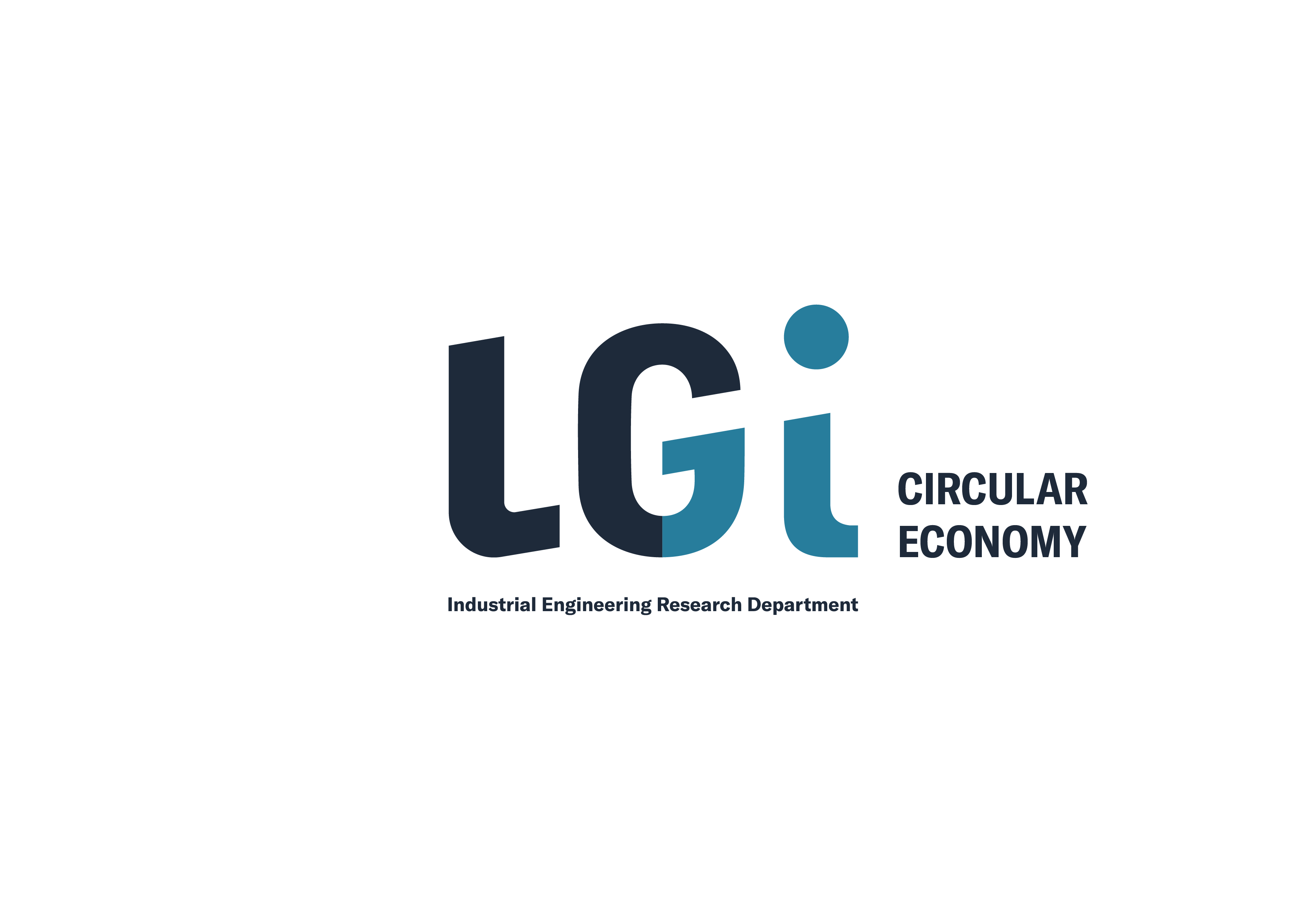The Circularity Potential Indicator (CPI) Tool (beta version)
The CPI aims at evaluating the circularity potential of industrial products during: (re-)design, development or benchmarking phases.
The CPI provides practical keys for improving and monitoring the circularity performance of products and associated business practices.
The CPI is computed through a guided questionnaire of twenty attributes (ATT#) impacting the circular economy (CE) performance of a product.
The twenty attributes are based on a literature review and grouped in the four building blocks (BB#) of the CE defined by the Ellen MacArthur Foundation.
|
Circularity Performance Indicator Unlock the Circularity Potential of your Product |
Circularity Score of the Product = (out of 100) |
||
|
BB#1 - Circular Product Design (sub-score / 25) |
|||
|
ATT#1 - Materials selection and combination compatibility (sub-score / 5) |
|||
|
Number of differents materials |
|||
|
Technical recyclability of materials combinaison |
|||
|
Material contamination (coating, paints, and material mixing) |
|||
|
ATT#2 - Modular product design, adaptability and flexibility |
|||
|
Is the product contained standardised components |
|||
|
Has the product being design with a modular mindset |
|||
|
ATT#3 - Design for disassembly and easy end-of-life sorting |
|||
|
Handling and manoeuvrability of the product (for a single user) |
|||
|
Number of different distinct components (regarding the size of the product) |
|||
|
Joints and connections numbers (regarding the size and number of components) |
|||
|
Joints and connections types |
|||
|
Joints and connections accessibility |
|||
|
Disassembly cost and time (regarding value of the product) |
|||
|
Tools required for disassembly |
|||
|
ATT#4 - Design for upgradability |
|||
|
Possible options of upgradability |
|||
|
ATT#5 - Design for maintainability and longevity |
|||
|
Wear and tear indicator or information |
|||
|
Possibility of maintenance and repair |
|||
|
Accessibility, visibility, reachability and identifiability of key components |
|||
|
BB#2 - New Business Model |
|||
|
ATT#6 - Design for PSS & Product-as-a-Service |
|||
|
Is the manufacturer currently retain ownership of the product |
|||
|
ATT#7 - Leasing or rental schemes |
|||
|
Leasing or rental offers for the product |
|||
|
ATT#8 - Aftersales services - Customized services related to the product |
|||
|
Number of services (among diagnosis, preventive maintenance, repair service, warranty) |
|||
|
ATT#9 - Take-back offers |
|||
|
Take-back schemes |
|||
|
ATT#10 - Partnership networks, Sharing platform or Industrial Symbiosis |
|||
|
Is there any other forms of collaboration between manufacturers, retailers, customers |
|||
|
BB#3 - Reverse Cycles |
|||
|
ATT#11 - Traceability of products and components all along lifecycle |
|||
|
Is the product included any form of connectivity allowing tracking or traceability |
|||
|
Is there any information-sharing system or database between stakeholders all along value chain |
|||
|
ATT#12 - Efficiency and cost of take-back processes |
|||
|
Organisation of the take-back process |
|||
|
Profitability (cost to return product to facilities compared to product value) |
|||
|
ATT#13 - Collection infrastructures and mechanisms |
|||
|
Collection infrastructures (sorting and other mechanisms) |
|||
|
ATT#14 - Treatment facilities (remanufacturing and recycling) features |
|||
|
Treatment facilities taking up end-of-life operations |
|||
|
Remanufacturing or recycling costs (compared to original components, primary materials value) |
|||
|
Facilities capacity regarding amount of products |
|||
|
Technical documentation for end-of-life handling (e.g. dismantling instructions) available |
|||
|
ATT#15 - Collaboration between actors involved in EoL value chain |
|||
|
Is there any consortium, mutual or shared interest among actors to a closed-loop supply chain |
|||
|
BB#4 - Favourable System Conditions |
|||
|
ATT#16 - Product conditions at the end-of-life (resudual value) |
|||
|
Value degradation of material for recycling |
|||
|
Physical deterioration of component for reuse or remanufacturing |
|||
|
Quality and reliability of recycled materials or remanufactured products |
|||
|
ATT#17 - Stakeholders' willingness, behaviours and motivations |
|||
|
Rethinking incentives and pro-active attitude from companies to enhance the circular economy |
|||
|
Users’ awareness of environmental issues, sustainability and circularity |
|||
|
Users’ emotional links to the product |
|||
|
Communication to users on possibilities of reuse, recycle or dispose properly their products |
|||
|
ATT#18 - Policy framework |
|||
|
Waste legislation concerning the product |
|||
|
Mandatory percentage of reuse or recycling imposed |
|||
|
Is the product concerned by EPR (Extended Producer Responsability) |
|||
|
Mandatory ecodesign standard for reuse and repair |
|||
|
ATT#19 - Second-hand market characteristics |
|||
|
Presence of second-hand market for the product |
|||
|
Market demand for remanufacturing products |
|||
|
Markets for secondary raw materials of the product |
|||
|
Availability of spare parts of the product |
|||
|
ATT#20 - Financial incentives and mechanisms supporting CE approaches |
|||
|
Is there any financial support, by government or environmental agencies, to foster CE incentives for the product |
|||


 © 2025 M.S.
© 2025 M.S.

